Abstract
Vegetable production trends in Norway vary from region to region, depending on climatic conditions and land use, with certain vegetables being given priority for production. According to data for 2022, cabbage is the most produced crop, with production reaching 31.8kt. This is because cabbage is easy to grow in cool climates and has a stable yield. Next in production are potatoes and carrots, and these vegetables are mainly grown on Norway’s large agricultural land. In addition, tomato production is dependent on greenhouse cultivation, and is divided into two categories: for home use and for processing (tomato sauce, canned goods, etc.). In terms of uses, tomatoes for home use account for a large proportion, which can be said to reflect demand rooted in consumers’ food culture. In terms of land use, much of the cultivated land is concentrated in the cultivation of high-demand vegetables such as cabbage and potatoes, which are mainly supplied to the local market. In Norway, agriculture requires efficient land use in order to produce a wide variety of crops efficiently on limited farmland.
Production (by vegetables)
Vegetable production in Norway has shown significant fluctuations between 1961 and 2022. In particular, cabbage production volume has been on a downward trend since peaking at 60kt in 1996, and will be 53% of that figure, at 31.8kt, in 2022. This decline is likely due to changes in consumer eating habits, increased demand for other vegetables, as well as changes in agricultural techniques and crop management methods. Cabbage was once widely grown as Norway’s staple vegetable, but in recent years there has been growing interest in a more diverse range of vegetables and this change in demand has been reflected in production. On the other hand, production of other vegetables such as tomatoes and potatoes is stable, and the spread of greenhouse cultivation in particular has supported tomato production. These vegetables are adapted to cool climates, and improvements in greenhouse technology and efficient production methods have supported production volumes. Overall, Norwegian vegetable production is adapting to changing market conditions and focusing on products that are in high demand.
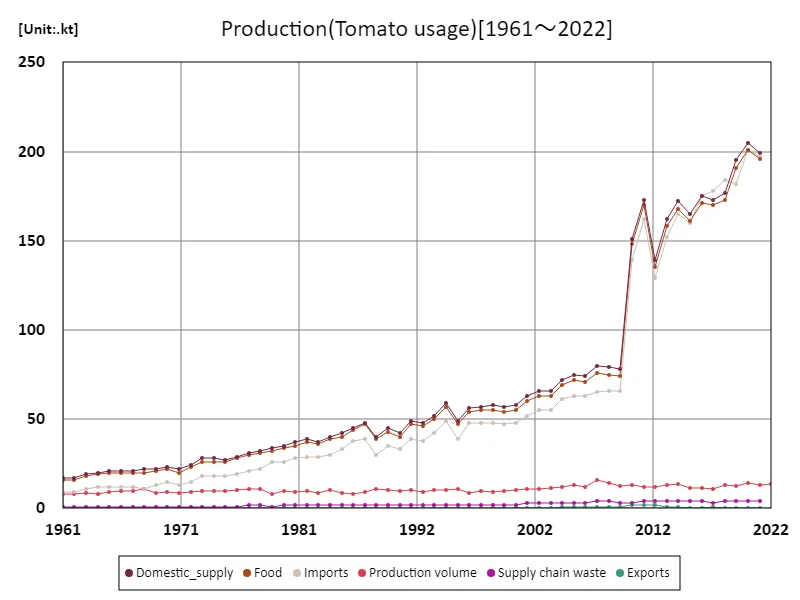

The maximum is 205kt[2020] of Domestic_supply, and the current value is about 97.1%
Yield(by vegetable)
One notable trend in Norwegian vegetable production is the peak and subsequent decline in tomato production. In 2007, tomato yield reached a peak of 464t/ha, but has since declined and is currently at 76.9% of its peak. This decline can be attributed primarily to climate change and changes in efficiency in greenhouse cultivation, as well as fluctuations in market demand. Tomatoes require a warm climate and greenhouse cultivation is the primary means of production in Norway, but increased energy and maintenance costs may have affected production volumes. There are also changes in tomato consumption trends, influenced by consumer food culture and diversifying processing methods. Tomatoes remain a popular vegetable, but production is driven by demand for both fresh consumption and processed products (tomato sauce, canned goods, etc.), and there is a growing tendency for them to be divided according to their intended use. Against this background, it can be said that Norwegian tomato production has reached a temporary peak and is now adjusting to changes in the market and technology. It is expected that improvements in efficient cultivation methods and reductions in energy costs will continue to contribute to stabilizing tomato production.
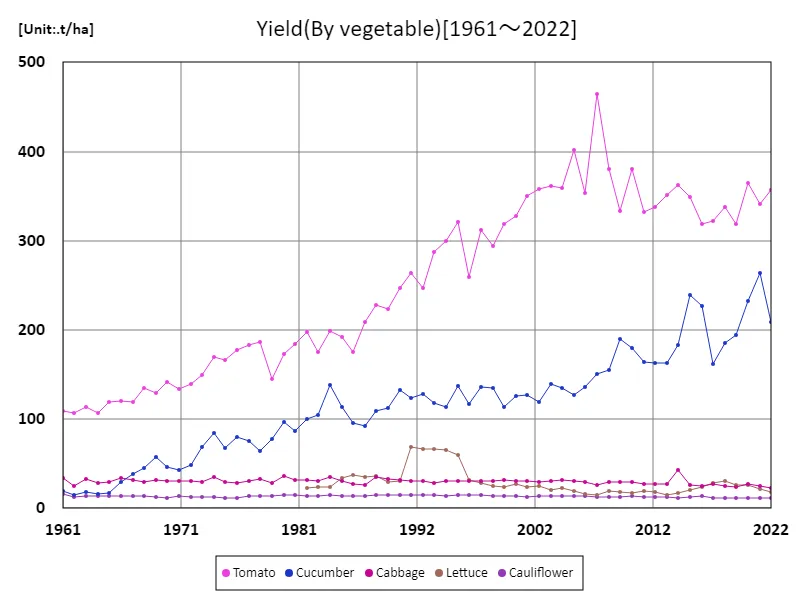

The maximum is 464t/ha[2007] of Tomato, and the current value is about 76.9%
Land use (by vegetables)
The trends in land use for vegetable production in Norway are notable, with the area cultivated for cabbage particularly standing out compared to other vegetables. According to data from 2022, the cabbage cultivation area is 1.37kha, accounting for the largest land use area in total vegetable production. This scale indicates that cabbage is grown over a wide area because it grows easily in cool climates and there is a steady demand for it. On the other hand, the average area cultivated with vegetables across Norway is 671ha, with a total area of 3.36kha. This reflects the emphasis on Norwegian agriculture on growing a diverse range of crops and making efficient use of limited land. While cabbage stands out as a crop with a large land use, other vegetables such as potatoes, carrots and tomatoes also maintain some land use, mainly supplying the local market. Norwegian agriculture is characterised by the diversification of land use and crop adaptation, with land use being flexibly adjusted according to the climate and consumer demand. In the future, it is expected that land use efficiency will continue to improve, reflecting changes in climate change and advances in agricultural technology.
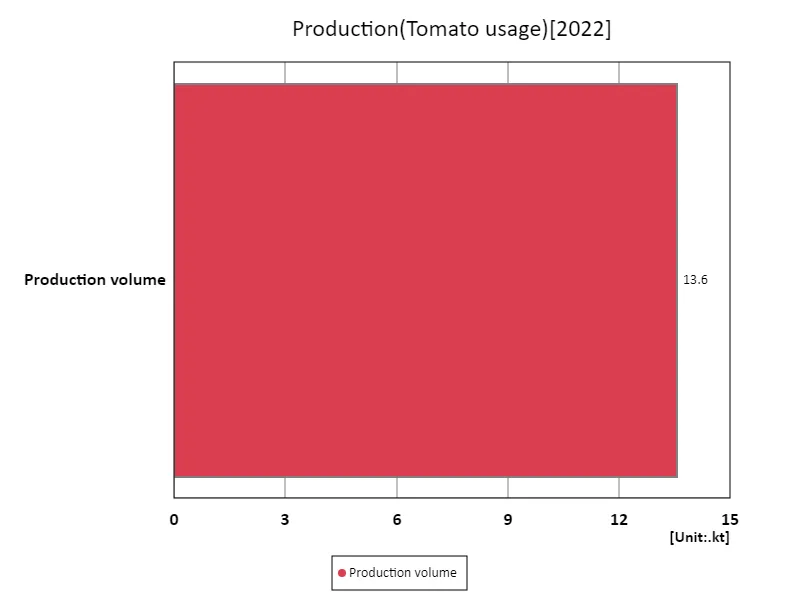

The maximum is 13.6kt of Production volume, the average is 13.6kt, and the total is 13.6kt
Tomato usage
A distinctive feature of Norwegian tomato production by use is that production fluctuates according to domestic supply demand. The peak production volume of tomatoes in 1961 was 205kt, and during this period most of the production was for the domestic market. This data shows that tomato production was primarily intended to support domestic consumption. Since then, tomato production in Norway has become more efficient with advances in greenhouse cultivation technology and production volumes have stabilized, but there have been changes in specific uses. Currently, tomato production is dominated by demand for home use, with demand for fresh consumption and processed products (such as sauces and canned goods) being particularly high. Tomatoes require a warm climate and are typically grown in greenhouses, ensuring a stable supply of tomatoes in Norway. Furthermore, due to changes in consumer food culture, the uses of tomatoes are diversifying, and demand for them as salads and seasonings is also increasing. Going forward, tomato production for specific uses is expected to continue to be flexibly adjusted according to consumer preferences and market trends.
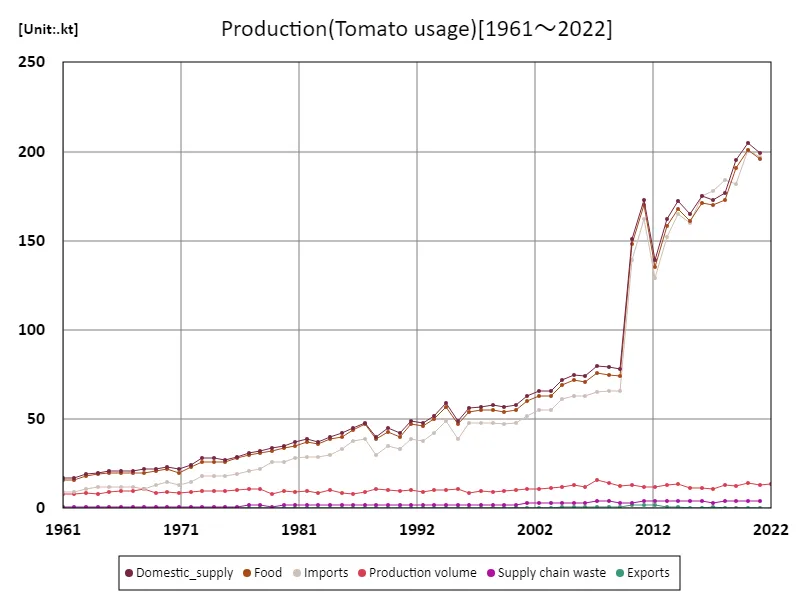

The maximum is 205kt[2020] of Domestic_supply, and the current value is about 97.1%
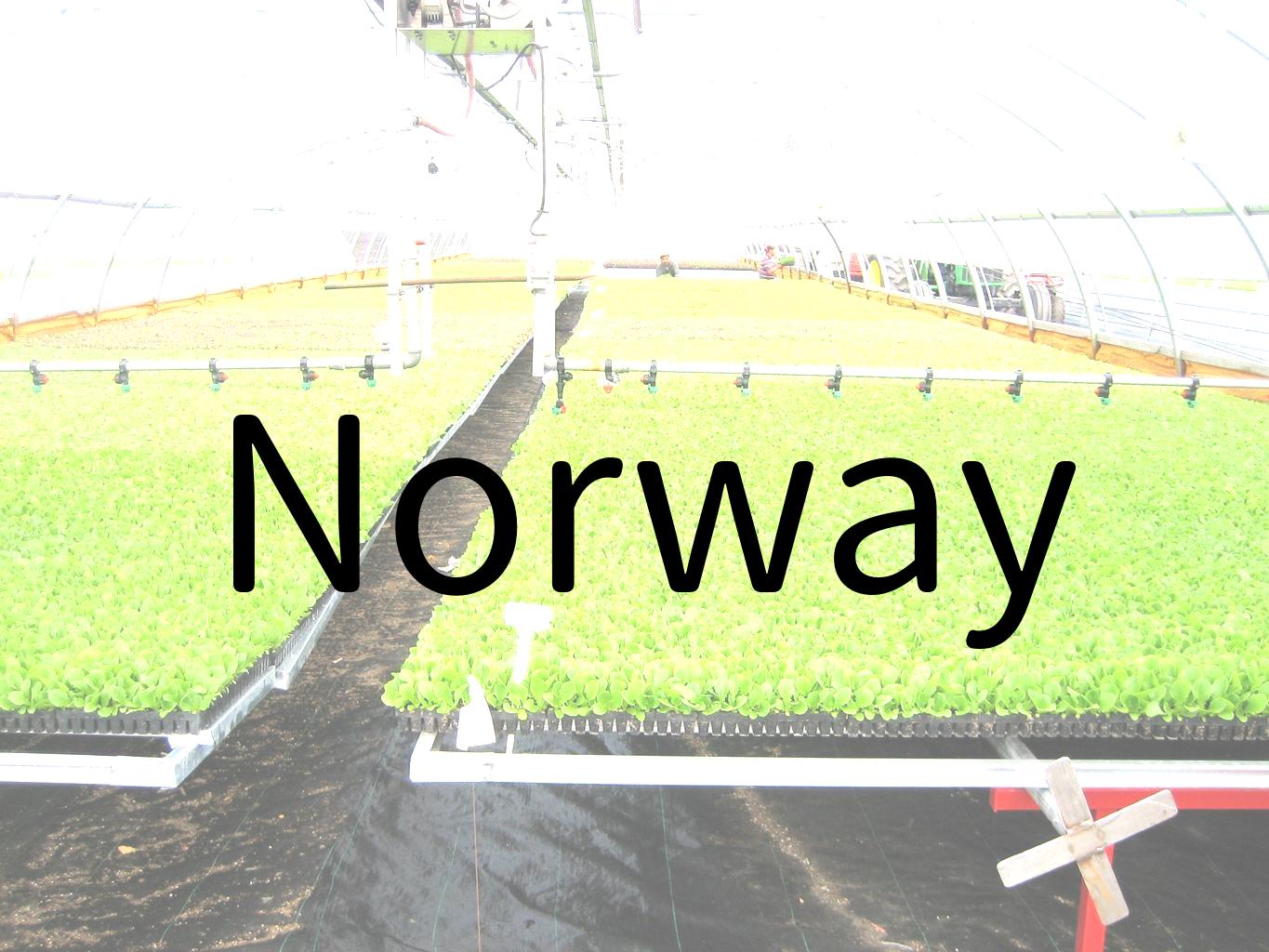


Comments